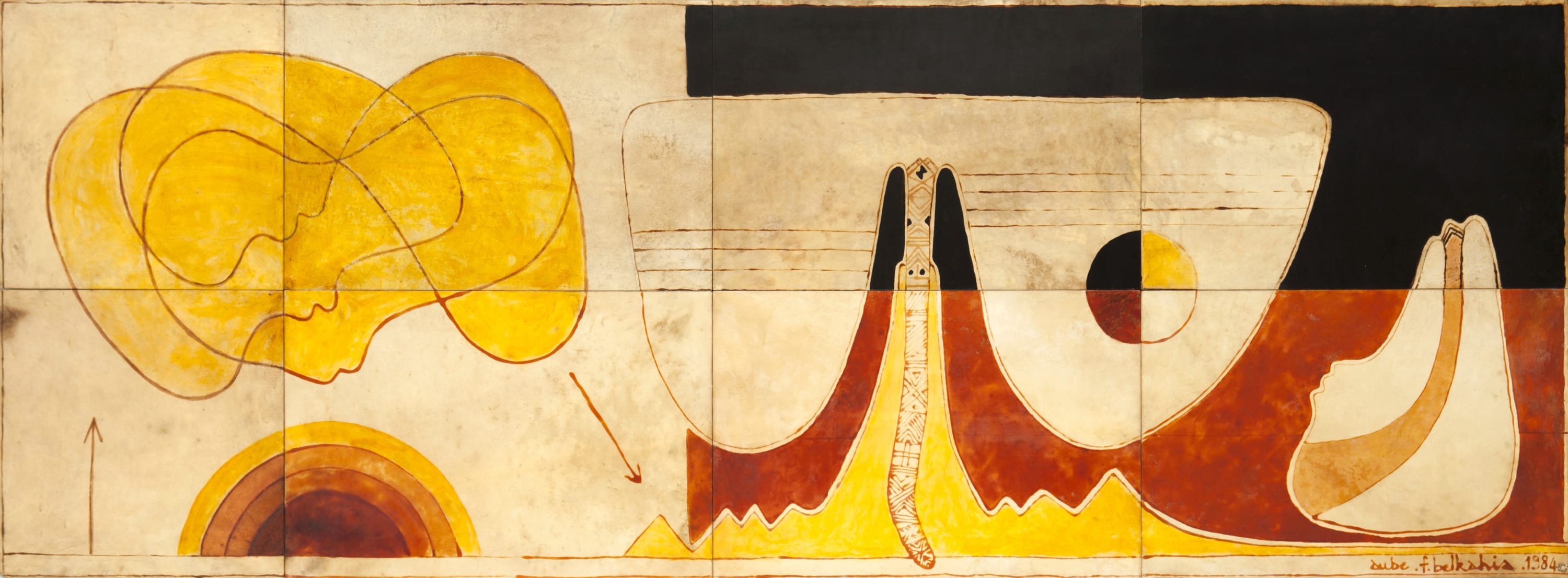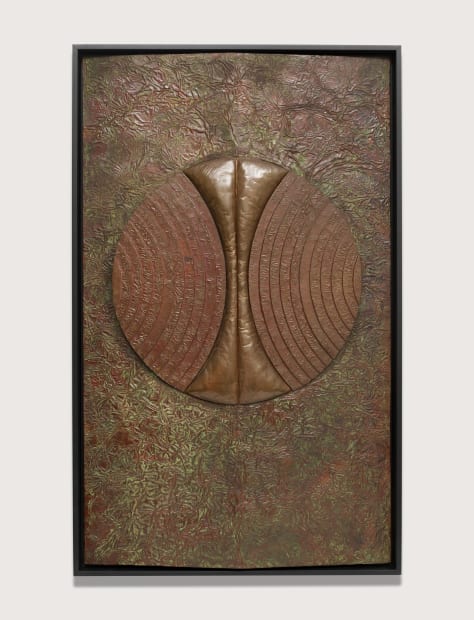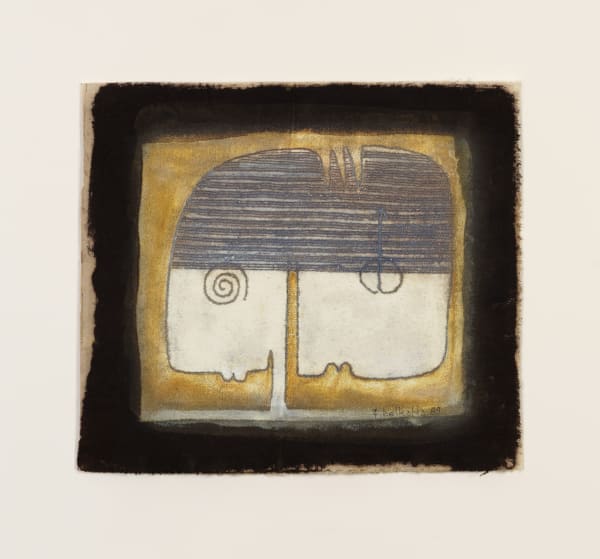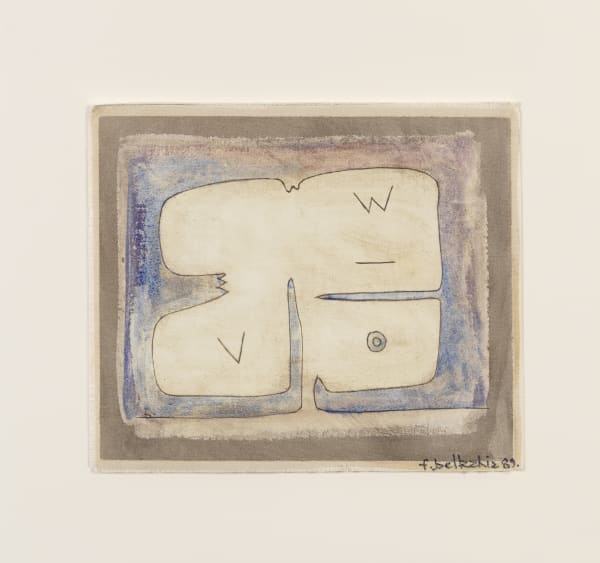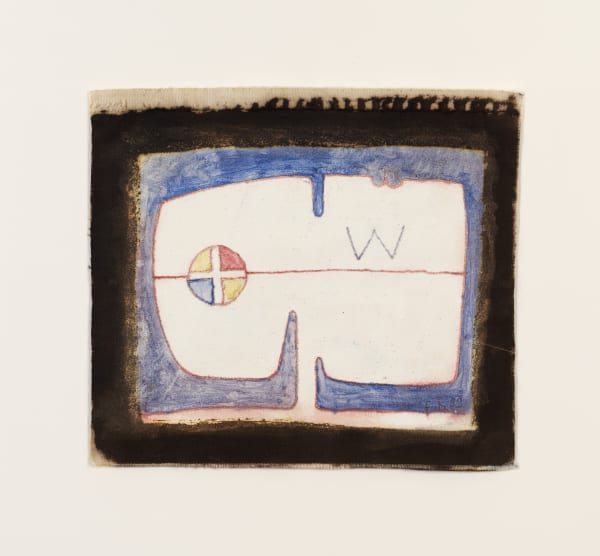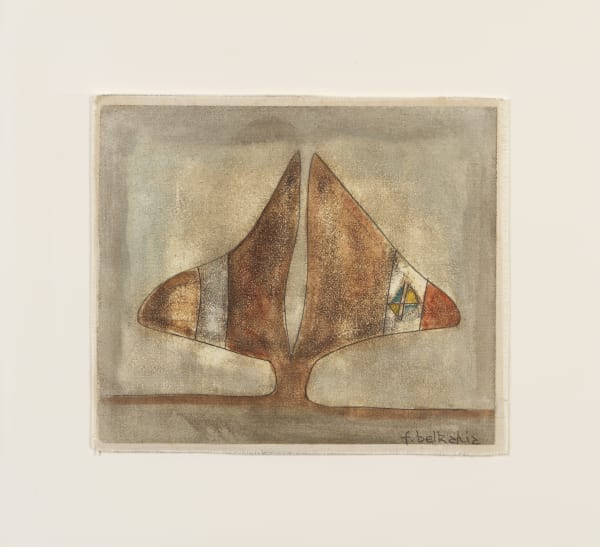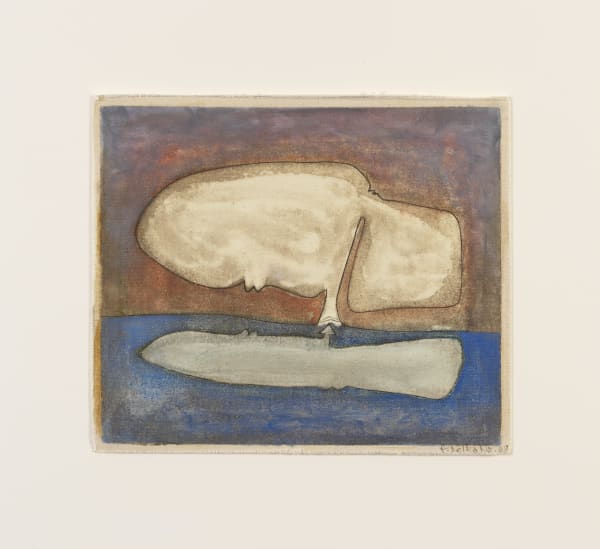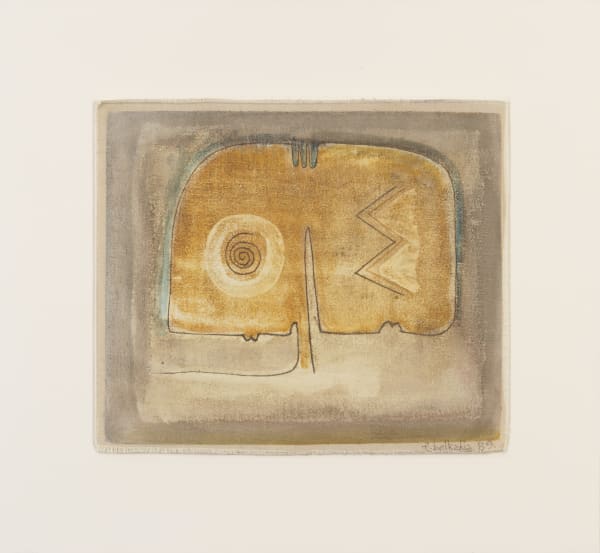-
Farid Belkahia is considered the precursor of modern and contemporary art in Morocco, and a seminal figure for Global South and trans-Mediterranean modernism.
Appointed director of the Casablanca Art School in 1962, at the age of 28 years old, where he remains so until 1974, Belkahia established a national legacy in post-Independence Morocco, through a new experimental pedagogy that explored the second or modern life of traditional arts and crafts (tapestry, pottery, jewellery, architecture, calligraphy, the painted ceilings of rural mosques in the Sous and the High Atlas…). A famous statement that Belkahia cultivated throughout his overall artistic philosophy was that “tradition is the future of Man”.
Beyond the outstanding legacy of the Casablanca Art School (made alongside with Mohamed Melehi, Mohammed Chabâa, Toni Maraini and Bert Flint among others), Belkahia can also be described as one of the forerunners of an aesthetics or attitude which can be named “cosmogonic”. Indeed for his exploration of post-vernacular shapes and alphabets, in relation to the elements of Nature/Landscape, but a transformative and personified one. The cosmogonic artist (one can think also of Etel Adnan, Huguette Caland or closer to Belkahia of Mohamed Melehi) combines atmospheric, astral and popular symbols; he navigates between the Esoteric and the Erotic.
-
 Aube, 1984 Dye on skin and wood
Aube, 1984 Dye on skin and woodThe work Aube (1984) stands clearly of the most eloquent manifestation of such attitude, reaching a peak in his art of the ambivalence and metamorphosis (abstract/figurative, human/animal, femininity/masculinity…). It represents a climax in Belkahia’s poetics and large scale works of the 1980s, made of nomadic signs and totemic structures. On the left part of the work, one identifies the semi-circle sun rays or “rainbow” like element surrounded by the geographical arrows, pointing at opposite directions, and the voluptuous “cloud” of intertwined red lines, which appears as early as in Belkahia’s 1960s drawing (with its anthropomorphic function to hide a couple or potential bodies making love).
-
 Composition, 1971, Copper relief
Composition, 1971, Copper relief -
 Couple Seins, 2000, Pigments on skins
Couple Seins, 2000, Pigments on skins -
-
 Arbre de vie No. VIIPigments on textile48h x 52w cm
Arbre de vie No. VIIPigments on textile48h x 52w cm -
 Arbre de vie No. VIPigments on textile48h x 52w cm
Arbre de vie No. VIPigments on textile48h x 52w cm -
 Arbre de Vie No.III, 1989Pigments on textile48h x 52w cm
Arbre de Vie No.III, 1989Pigments on textile48h x 52w cm -
 Arbre de Vie No.V, 1989Pigments on textile48h x 52w cm
Arbre de Vie No.V, 1989Pigments on textile48h x 52w cm -
 Arbre de Vie No.IV, 1989Pigments on textile48h x 52w cm
Arbre de Vie No.IV, 1989Pigments on textile48h x 52w cm -
 Arbre de Vie No.I, 1989Pigments on textile48h x 52w cm
Arbre de Vie No.I, 1989Pigments on textile48h x 52w cm -
 Arbre de Vie No.II, 1989Pigments on textile48h x 52w cm
Arbre de Vie No.II, 1989Pigments on textile48h x 52w cm
-
-
The Arbre de vie (Tree of life) series was one of Belkahia’s best kept secret garden, in which those cosmic lines and sensual manifestations continue their permanent energetic movement. One can decipher signs and symbols reminders of Afro-Berber Amazigh culture and Tifinagh alphabet rooted far beyond North Africa, into a trans-Saharan and African map here again. Each Tree of life concentrates the hybridization process expanding in Belkahia’s large skin works: the numerous arrows, spirals and continents floating adrift that populate his universe, rather than encouraging ornamental dispersion, tend on the contrary irrevocably towards a centre, though sometimes an invisible one. As Belkahia would say with a sense of mystic: “Every individual is locked into a circle, a sort of personal cosmos in which he is subjected to the pressure that comes from all directions, a pressure that is liberated through trance.”
Morad Montazami, September 2021
Frieze Masters 2021, Selma Feriani Gallery
Morad Montazami is an art historian, a publisher and a curator. He is the director of Zamân Books & Curating,committed to transnational studies of Arab, Asian and African modernities.
Farid Belkahia, the Cosmogonic artist
Previous viewing_room
